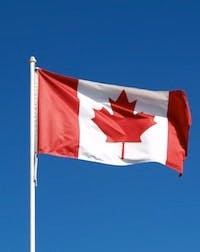High-quality water is important for power generation. It helps facilitate operations, protect critical equipment and minimize environmental impact. Source water for many power plants, however, is far from ideal. At a power station in Alberta, a two-pass reverse osmosis (RO) design was used to optimize the plant’s existing configuration. The design includes Dow Filmtec ECO 440i and Filmtec XFRLE-400/34i RO elements. Since their installation, the Filmtec ECO elements have resulted in 30% more energy savings in the system’s second pass and Filmtec XFRLE has improved overall pressure drops and fouling.
The lake source water at the power station is derived from a combination of the North Saskatchewan River, mine drainage, plant site drainage, sewage effluent and chemical neutralization ponds. Due to the variable nature of source water, the system requires thicker feed spacer elements to reduce fouling rates and lower the pressure drop in the first pass.
To combat this water source challenge, the team designed a two-pass RO system with the Filmtec XFRLE elements for the first pass and the Filmtec ECO 440i elements for the second pass.
Together, these low-energy elements provide a solution to treat the power station’s high-fouling source water and deliver high-quality permeate for the boiler feed process. The elements are optimized with low pressure drop feed spacers to allow for lower feed operating pressures, which help reduce operating costs and counter the effects of the cool feedwater temperature range (7°C to 26°C). The Filmtec ECO elements also have helped reduce chemical usage, when the plant opted not to degas the carbon dioxide with caustic in the second pass, while maintaining high permeate quality for continuous electrodeionization polishing prior to feeding the boiler.
Power plants rely on a steady stream of water to convert heat energy into electrical energy to drive the turbines that run the electric generators. To accomplish this, the plants require high-quality feedwater to operate their boiler and cooling systems. The treatment of boiler feedwater is critical, as problems can result from the use of untreated water in extreme pressure and temperature environments, including lower efficiency, overheating, damage and the need for frequent cleaning. Because 95% of water used in plant operations can be reused, it is vital that both the feedwater and recycled steams are effectively treated to prevent scale and corrosion in the steam water circuit.
“Highly variable source water and cooler feed temperatures can present unique energy and fouling challenges for Canadian power plants,” said Wendy Rae, account manager for Dow Water & Process Solutions. “We are proud to provide early adopters of innovative technology with solutions to help lower their operating costs, reduce plant downtime, and maintain product water quality and consistency.”
Source: Dow Water & Process Solutions


